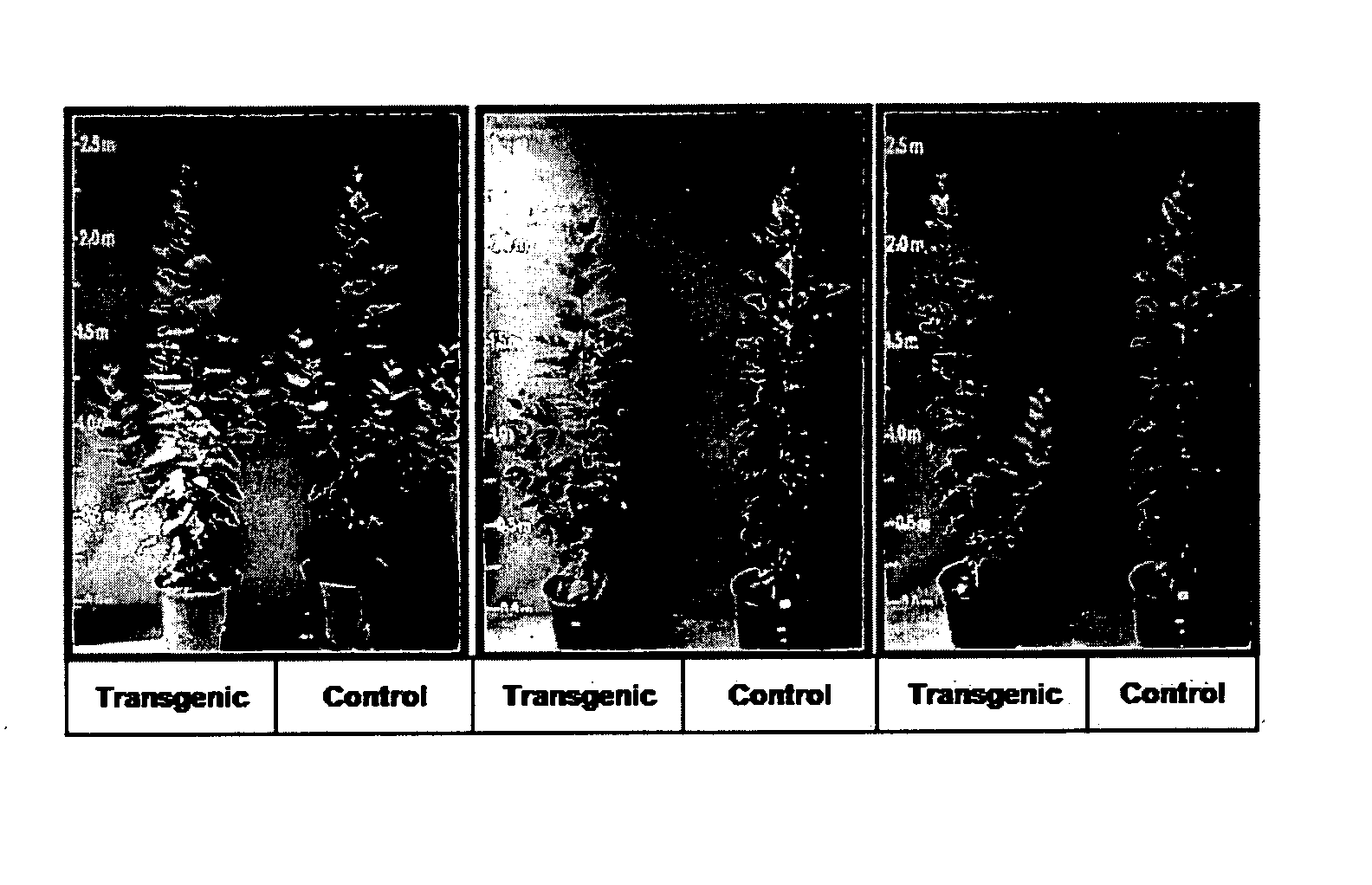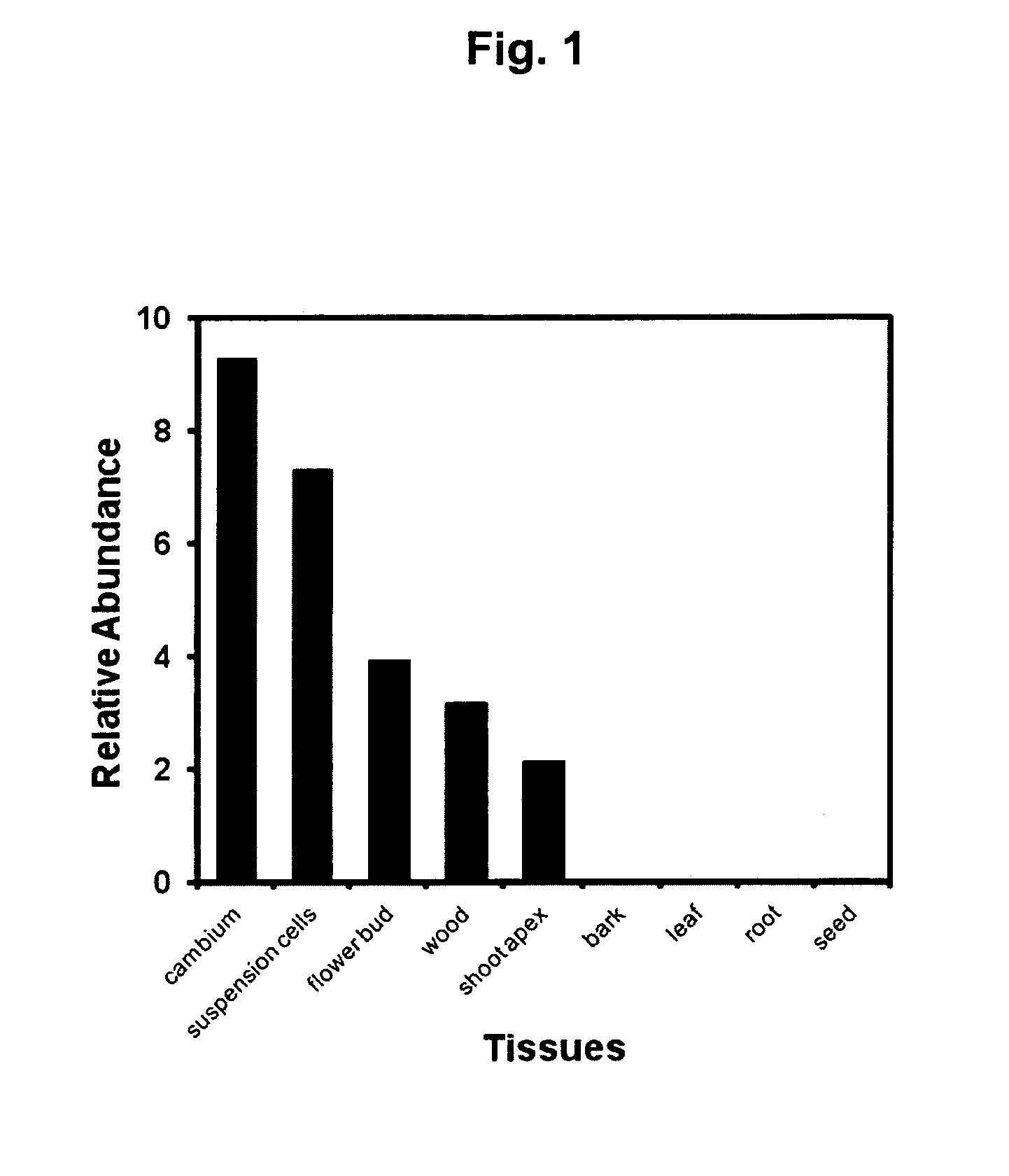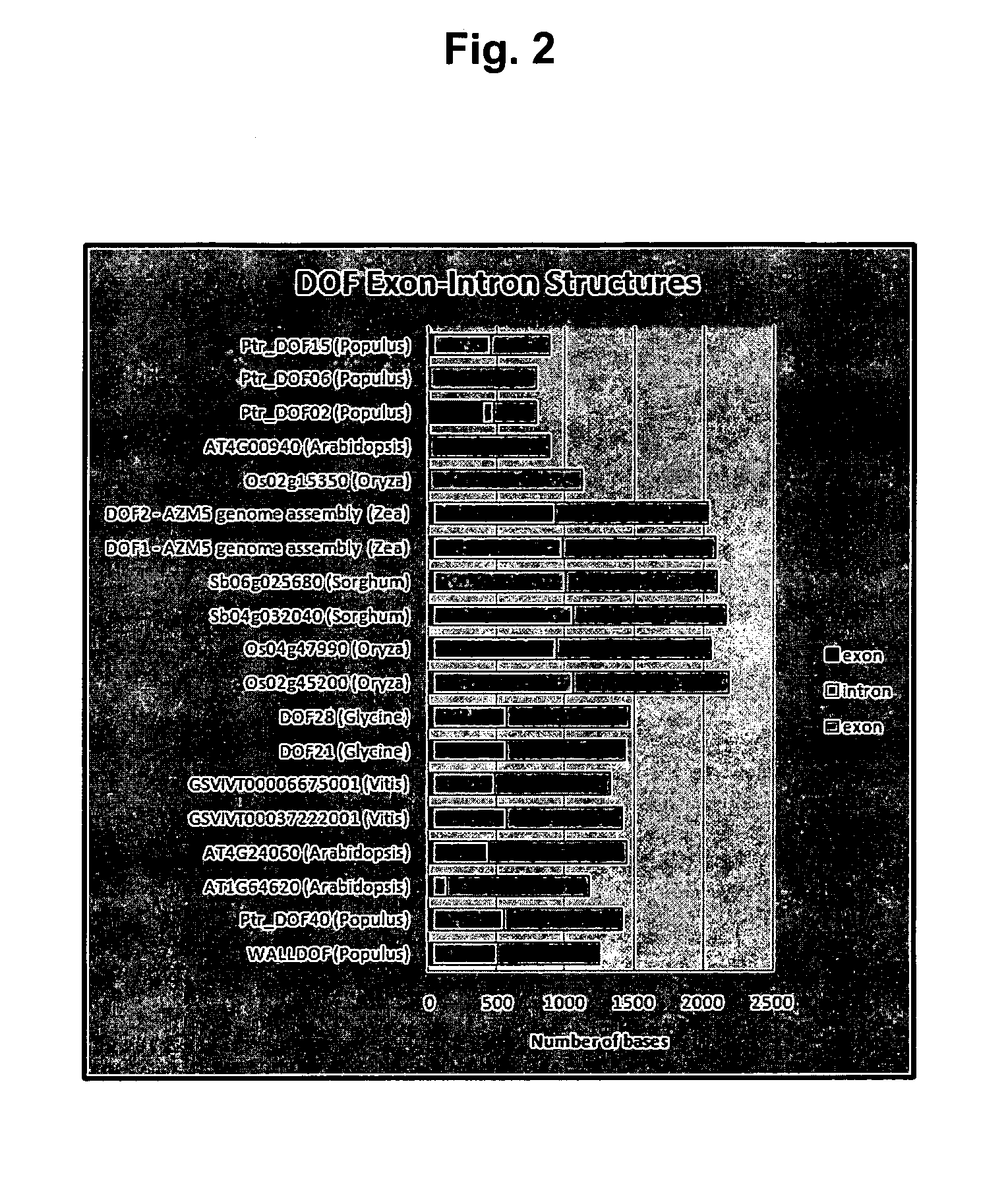Increasing cell wall deposition and biomass density in plants
a cell wall deposition and biomass density technology, applied in the field of crops, can solve the problem of slow process of conventional breeding and achieve the effect of increasing biomass density
- Summary
- Abstract
- Description
- Claims
- Application Information
AI Technical Summary
Benefits of technology
Problems solved by technology
Method used
Image
Examples
example 1
Identification of Walldof Gene in Poplar
[0117]To develop the methods and make the DNA constructs of the present invention firstly we searched for transcription factors that are preferred expressed in the poplar xylem.
[0118]The collection of over 400,000 ESTs from Populus sp. available in GenBank was searched for the tissue-specific pattern of expressed genes. For this purpose the cDNA libraries made from different poplar tissues, were grouped into representative tissues: suspension cell, apical shoot, bark, cambium, seed, wood, flower bud, leaf and root. A set of clusters generated by the CAP3 program (Huang and Madan, Genome Res., 9:868-877, 1999) was searched for those composed of at least 90% of EST reads from libraries representing poplar cambium and wood tissues. Additionally, the clusters was searched for those composed of at least three EST reads from cambium and wood tissues and preferably less than two reads from other libraries.
[0119]The selected clusters were then aligned...
example 2
Identification of Walldof Homologs in Poplar and Other Plants
[0121]According to a phylogenetic study WALLDOF is part of a cluster or Glade comprised of Ptr_DOF40, Ptr_DOF02, PTR_DOF06, Ptr_DOF15, Ptr_DOF25, Os02g45200 (NCBI ID: Os02g0673700), Os04g47990 (NCBI ID: Os04g0567800), Os02g15350 (NCBI ID: Os02g0252400), AT2G46590, AT3G61850, AT4G24060, AT1G64620, and AT4G00940. Yang et al., Plant Physiol., 142: 820-30 (2006).
[0122]By sequence similarity analysis, determined via a BLAST search, for example, other sequences of other plants are identified: two from grape genome (Vitis vinifera—Phtozome / JGI ID GSVIVT00037222001 and GSVIVT00006675001), two from soybean genome (Glycine max—GenBank annotation ID DOF21—gi|112363396|gb|ABI16022.1|—and DOF28—gi|112363398|gb|ABI16023.1|). Within other grasses, two sorghum putative DOF genes (JGI ID Sb04g032040.1 and Sb06g025680.1) are similar to WALLDOF. It is possible to identify two similar DOFs in the current assembly of the maize genome (Tigr AZM...
example 3
Isolation and Cloning of Walldof from Populus deltoides
[0125](a) Preparation of mRNA from Populus deltoides Cambium / Xylem and cDNA Synthesis:
[0126]Bark was removed from stem cuttings of one-year-old Populus deltoides trees. The inner part of the stem, containing cambium, xylem and pith, was cut in small pieces, frozen in liquid nitrogen and used for RNA extraction using the cetyltrimethyl-ammonium bromide (CTAB) extraction method. See Aldrich and Cullis, Plant Mol. Biol. Report., 11: 128-41 (1993). cDNA was synthesized using total RNA as template. The first strand of cDNA was produced by RT-PCR using Superscript II reverse transcriptase (Invitrogen) and an oligo(dT) primer. Double-stranded cDNA was obtained by the subsequent polymerase reaction, using gene-specific primers, as described below.
(b) Design of PCR Primers and RT-PCR Reaction:
[0127]Oligomers based on Populus trichocarpa gene model estExt_fgenesh4_pg.C_LG_XV0093 were synthesized as primers for PCR, including either the r...
PUM
| Property | Measurement | Unit |
|---|---|---|
| temperature | aaaaa | aaaaa |
| temperature | aaaaa | aaaaa |
| thickness | aaaaa | aaaaa |
Abstract
Description
Claims
Application Information
 Login to view more
Login to view more - R&D Engineer
- R&D Manager
- IP Professional
- Industry Leading Data Capabilities
- Powerful AI technology
- Patent DNA Extraction
Browse by: Latest US Patents, China's latest patents, Technical Efficacy Thesaurus, Application Domain, Technology Topic.
© 2024 PatSnap. All rights reserved.Legal|Privacy policy|Modern Slavery Act Transparency Statement|Sitemap



